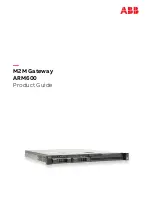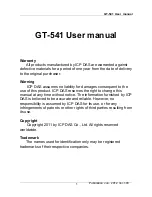
Issue 5 June 2008
665
Chapter 21: Configuring policy-based
routing
Policy-based routing enables you to configure a routing scheme based on traffic’s source IP
address, destination IP address, IP protocol, and other characteristics. You can use
policy-based routing (PBR) lists to determine the routing of packets that match the rules defined
in the list. Each PBR list includes a set of rules, and each rule includes a next hop list. Each next
hop list contains up to 20 next hop destinations to which the G250/G350 sends packets that
match the rule. A destination can be either an IP address or an interface.
Policy-based routing takes place only when the packet enters the interface, not when it leaves.
Policy-based routing takes place after the packet is processed by the Ingress Access Control
List and the Ingress QoS list. Thus, the PBR list evaluates the packet after the packet’s
DSCP
field has been modified by the Ingress QoS List. See
Figure 49
.
Note:
Note:
The Loopback 1 interface is an exception to this rule. On the Loopback 1
interface, PBR lists are applied when the packet leaves the interface. This
enables the PBR list to handle packets sent by the G250/G350 device itself, as
explained below.
Note:
Note:
ICMP keepalive provides the interface with the ability to determine whether a next
hop is or is not available. See
ICMP keepalive
on page 313.
Policy-based routing only operates on routed packets. Packets traveling within the same subnet
are not routed, and are, therefore, not affected by policy-based routing.
The Loopback interface is a logical interface which handles traffic that is sent to and from the
G250/G350 itself. This includes ping packets to or from the G250/G350, as well as telnet, FTP,
DHCP Relay, TFTP, HTTP, NTP, SNMP, H.248, and other types of traffic. The Loopback
interface is also used for traffic to and from analog and DCP phones connected to the device via
IP phone entities.
The Loopback interface is always up. You should attach a PBR list to the Loopback interface if
you want to route specific packets generated by the G250/G350 to a specific next-hop.
Unlike the case with other interfaces, PBR lists on the Loopback interface are applied to
packets when they leave the G250/G350, rather than when they enter.
Certain types of packets are not considered router packets (on the Loopback interface only),
and are, therefore, not affected by policy-based routing. These include RIP, OSPF, VRRP, GRE,
and keepalive packets. On the other hand, packets using SNMP, Telnet, Bootp, ICMP, FTP,
SCP, TFTP, HTTP, NTP, and H.248 protocols are considered routed packets, and are, therefore,
affected by policy-based routing on the Loopback interface.
Summary of Contents for Media Gateway G250
Page 1: ...Administration for the Avaya G250 and Avaya G350 Media Gateways 03 300436 Issue 5 June 2008 ...
Page 24: ...Contents 24 Administration for the Avaya G250 and Avaya G350 Media Gateways ...
Page 32: ...Introduction 32 Administration for the Avaya G250 and Avaya G350 Media Gateways ...
Page 38: ...Configuration overview 38 Administration for the Avaya G250 and Avaya G350 Media Gateways ...
Page 244: ...Configuring logging 244 Administration for the Avaya G250 and Avaya G350 Media Gateways ...
Page 258: ...Configuring VoIP QoS 258 Administration for the Avaya G250 and Avaya G350 Media Gateways ...
Page 370: ...Configuring SNMP 370 Administration for the Avaya G250 and Avaya G350 Media Gateways ...
Page 548: ...Configuring the router 548 Administration for the Avaya G250 and Avaya G350 Media Gateways ...
Page 664: ...Configuring policy 664 Administration for the Avaya G250 and Avaya G350 Media Gateways ...
Page 686: ...Setting synchronization 686 Administration for the Avaya G250 and Avaya G350 Media Gateways ...
















































